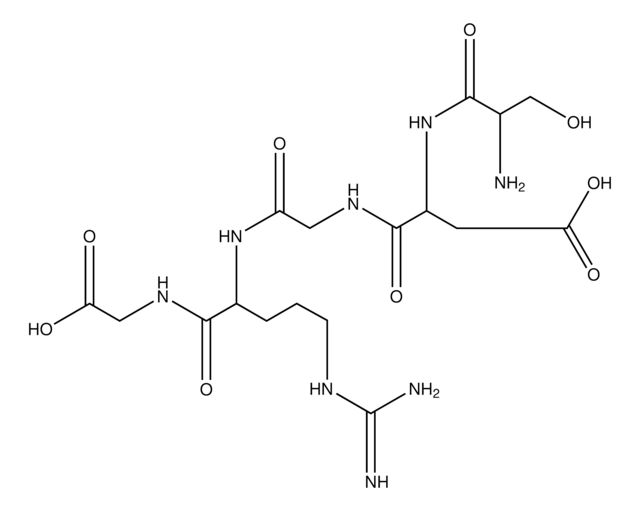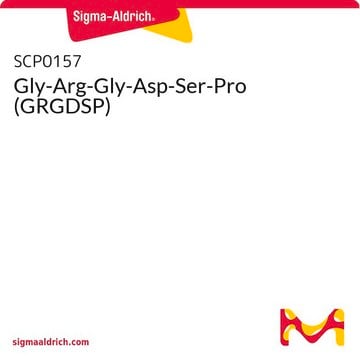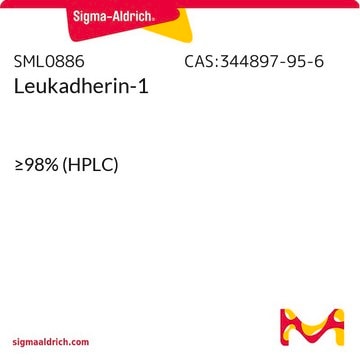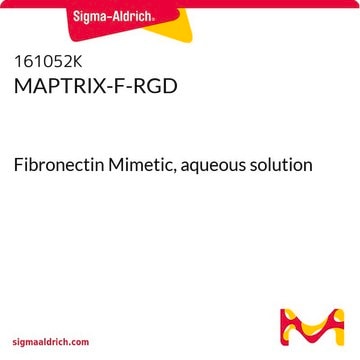About This Item
Recommended Products
Assay
≥97% (HPLC)
form
powder
composition
Peptide content, ≥60%
technique(s)
blocking: suitable
cell culture | mammalian: suitable
storage temp.
−20°C
SMILES string
NCC(=O)N[C@@H](CCCNC(N)=N)C(=O)NCC(=O)N[C@@H](CC(O)=O)C(=O)N[C@@H](CO)C(O)=O
InChI
1S/C17H30N8O9/c18-5-11(27)23-8(2-1-3-21-17(19)20)14(31)22-6-12(28)24-9(4-13(29)30)15(32)25-10(7-26)16(33)34/h8-10,26H,1-7,18H2,(H,22,31)(H,23,27)(H,24,28)(H,25,32)(H,29,30)(H,33,34)(H4,19,20,21)/t8-,9-,10-/m0/s1
InChI key
RGNVSYKVCGAEHK-GUBZILKMSA-N
Gene Information
human ... ITGB3(3690)
Looking for similar products? Visit Product Comparison Guide
Amino Acid Sequence
General description
Application
- as an antigen to determine whether integrin α4 or α5 hinders the adhesion of day 3 postirradiation thymocytes to thymic epithelial cells, in mice
- for the treatment of collagen IV-coated dishes to study the role of integrins α1, αv, β1, and β3 in Sca-1+ progenitor cell differentiation into SMCs (smooth muscle cells)
- as a blocking peptide for the pre-incubation of Nisseria meningitides strains, to perform blocking experiments to study the interactions between these bacterial strains and fibronectin
- for the pre-treatment of EL-4 cells infected by AdCMV-GFP (cytomegalovirus-green fluorescent protein), to study whether interaction with cellular integrins is essential for the transduction of adenovirus
Biochem/physiol Actions
Storage Class Code
11 - Combustible Solids
WGK
WGK 3
Flash Point(F)
Not applicable
Flash Point(C)
Not applicable
Personal Protective Equipment
Certificates of Analysis (COA)
Search for Certificates of Analysis (COA) by entering the products Lot/Batch Number. Lot and Batch Numbers can be found on a product’s label following the words ‘Lot’ or ‘Batch’.
Already Own This Product?
Find documentation for the products that you have recently purchased in the Document Library.
Customers Also Viewed
Our team of scientists has experience in all areas of research including Life Science, Material Science, Chemical Synthesis, Chromatography, Analytical and many others.
Contact Technical Service














